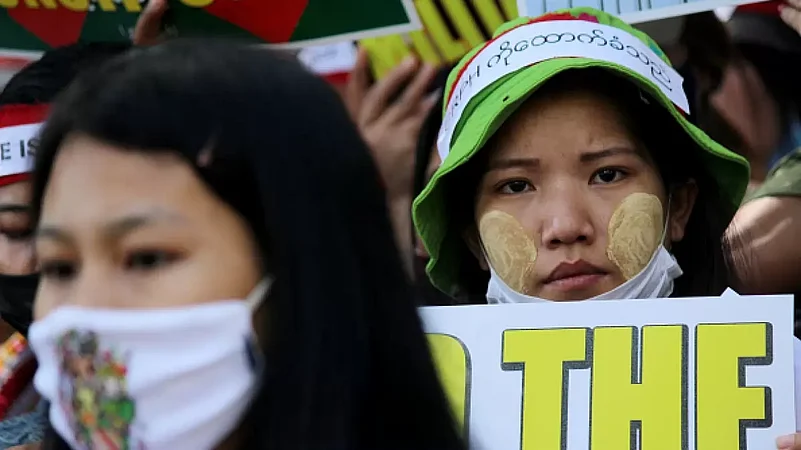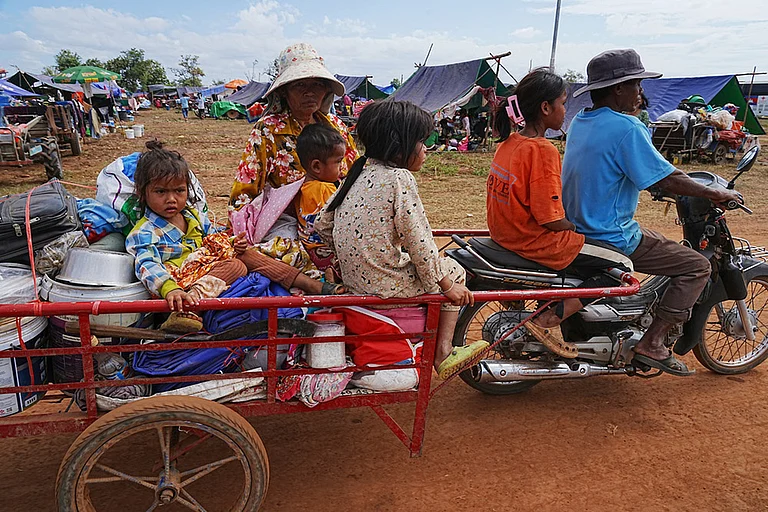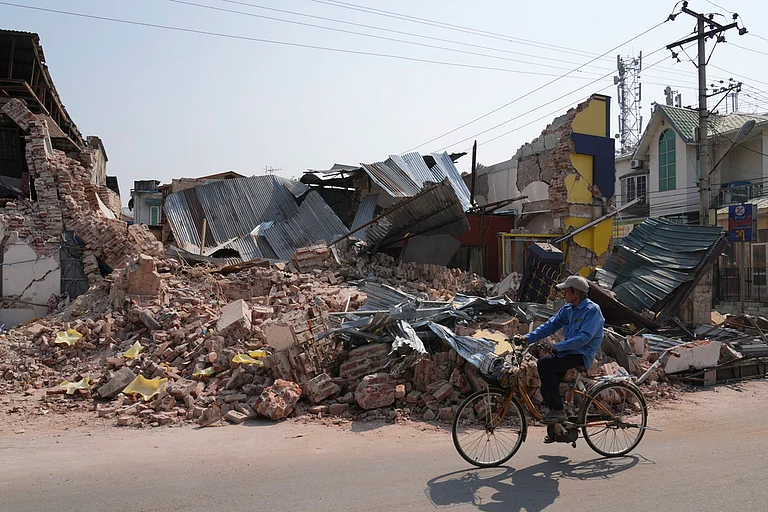The history of ethnic clashes in Northeast India, home to at least 220 tribes with over 400 dialects and each community having unique cultural identities, is always about ‘indigeneous communities’ protecting their land from ‘outsiders’.
Instances of clash between ‘locals’ and ‘non-locals’ are found in the eight northeastern states. In fact in states like Assam, the socio-political history has been altered by violent clashes between indigenous and outsiders, the Assamese and the migrants from Bangladesh since the partition. In the neighbouring Meghalaya, clashes between tribals and non-tribals often turn deadly.
In Tripura, the Bengali population which came and settled in the state during the partition have outnumbered the Twipuris and are blamed for snatching away economic and political rights of locals.
Likewise in Manipur, the Kuki tribe is blamed for taking over the hills of the Meiteis, that they consider belong to their ancestors.
In each instance, the communities regarded as outlanders are alleged to have brought more people to increase their strength in the social and political landscape. The Kukis in Manipur faced a similar accusation after the military coup in Feb 2021 in neighbouring Myanmar that made thousands of Chin refugees flocking into the Northeastern states. Manipur shares a 398 km border with Myanmar to its south and east. The Chin state, one of the most affected states of Myanmar, shares its boundary with Mizoram and Manipur.
The Chins and the complex ethnicity of Manipur
Home to three major groups of communities, Manipur has been ridden with insurgency and ethnic strife since colonial times. The Meiteis are the largest ethnic non-tribal community living in the valleys. The valley accounts for only 10.2 percent of the total area of 22,347 square km but houses over 55 percent of the total population. The hills are dominated by the Nagas and Pangals (Muslims) and the Kuki- Chin tribe.
The assimilation of the Chin refugees, those who have arrived from Myanmar, with the Kukis has further complicated the inter-community relationship and caused resentment to the Meiteis and the Nagas. They see it as a move by the Kukis to grow stronger and supersede the indigenous population.
The conflict between the hills and the valley population in Manipur has several dimensions. The Nagas are demanding a greater Nagalim carved out of territories from Nagaland, Assam, Arunachal Pradesh and Manipur, which includes a large portion of the Kuki-inhabited areas of Manipur. The Kukis are also demanding a separate Kukiland, a state within the state of Manipur, which includes territories of the proposed Greater Nagalim.
Since the 2000s, the Kukis have been demanding a separate Kukiland be carved out of the five hill districts-Churachandpur, Chandel, Senapati, Tamenglong and Ukhrul.
Interestingly, except Churachandpur, the proposed Greater Nagalim by National Socialist Council of Nagaland (IM) includes the four other districts. This has become a bone of contention between the two communities and has often led to ethnic cleansing of the Kukis by the NSCN(IM).
These two hill communities have clashed with each other multiple times. In 1993, around 115 people belonging to the Kuki tribe were allegedly massacred by the Naga outfit over a land conflict. Three monoliths constructed by the Kukis to commemorate the killings of their members by the NSCN (IM) in the 1990s contain the names of 1157 people. The clashes also led to destruction of thousands of houses and mass displacement of the Kukis. During that period around 380 Nagas were also killed by Kukis.
For the Meiteis, the Kukis are outlanders who came to the state in the 18th and 19th centuries and encroached upon their ancestral lands. Mount Koubru and its surroundings are considered to be the first site where the Meiteis, indigenous people of Manipur, began to settle down before they dispersed and came to the valleys.
Like the Mizos, the Chin and Kukis belong to the racial stock of Tibeto-Mongoloid. They share similar linguistic and cultural identities and hence differentiating the Chins from the Kukis of Manipur is tough. Various reports suggest the number of Chin refugees living in Manipur to be between 4000 and 10000. These people are mostly living in Churachandpur, Chandel and Kangpokpi district of - Kuki inhabited areas of Manipur. Manipur shares a 398 km border with Myanmar to its south and east. The Chin state, one of the most affected states of Myanmar, shares its boundary with Mizoram and Manipur.
A free Movement Regime (FMR) between India and Myanmar allows citizens living in an area within 16 km in either side of the borders to travel u pto 16-km with border pass and stay up to two weeks per visit.
Rising Concerns about the Chins
Talking to Outlook, Khuraijam Athouba, executive member of Coordination Committee OF Manipur Integrity (COCOMI), an umbrella body of civil organizations representing the Meiteis, said, “The number of Chin-Kuki population has outnumbered indigenous population of Manipur. As they belong to the scheduled tribe, they enjoy more privilege than the people from the valleys.”
Claiming massive influx of outsiders, Kh Joykishan Singh, JD(U)MLA of Manipur, has recently stated in the Manipur Assembly that between 1971 to 2001, the population of the state had grown by 153.3% in the hill districts. However the rise was 250.9% between 2001 and 2011. The valley districts saw a population growth of 94.8% and 125.4% between 1971 and 2001, and 2001 and 2011, he stated.
The Meiteis, who dominate the politics of Manipur, feel that the assimilation of chin refugees in the state will change the socio-political situation. Regarded as outlanders, Kukis are alleged to have brought more people to increase their strength after the military coup in Feb 2021 in neighboring Myanmar that made thousands of Chin refugees flocking into the Northeastern states. Various reports suggest that the number of refugees fleeing the Junta regime in Myanmar and taking shelter in Manipur are in between 4000-10000.
“Look at Assam. The migrant Bengali population from Bangladesh has taken over 30-40% assembly seats of the state and changed the demography in many constituencies. Manipur is a small state with limited resources. The legitimate Kuki population should know that the Chins belong to the other side of the country and that they can’t bring them in without a valid immigration process.” Athouba said.
The United Naga Council (UNC), an apex body of various Naga groups representing the Nagas living in the hills of Manipur, has also expressed concern about the Kukis giving assistance to the Chins to settle down in the hills.
“Manipur is facing a major problem of migration. The Kukis are letting in migrants without informing the competing authority If the influx continues, there will be a huge change in the demography of the state in the coming ten years,” said S. Milan, UNC Secretary.
Milan claimed that the migrant communities in Manipur are getting more rights and privileges than the indigeneous tribes.
"They may stay here and progress but they cannot be placed on equal footings with the indigenous communities,” he added.


























